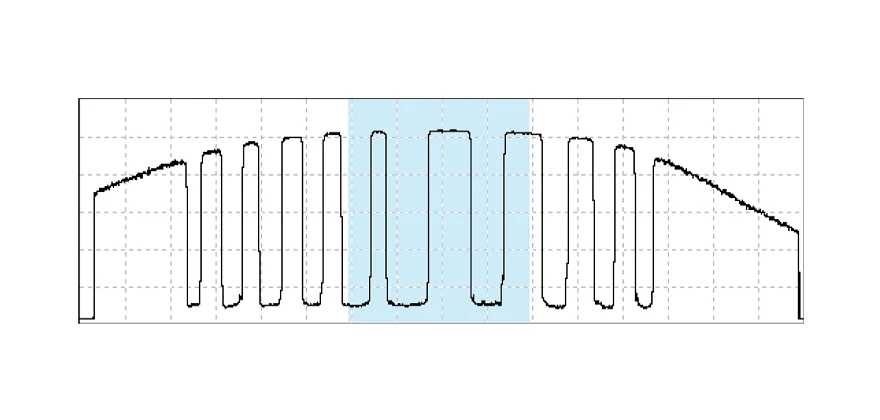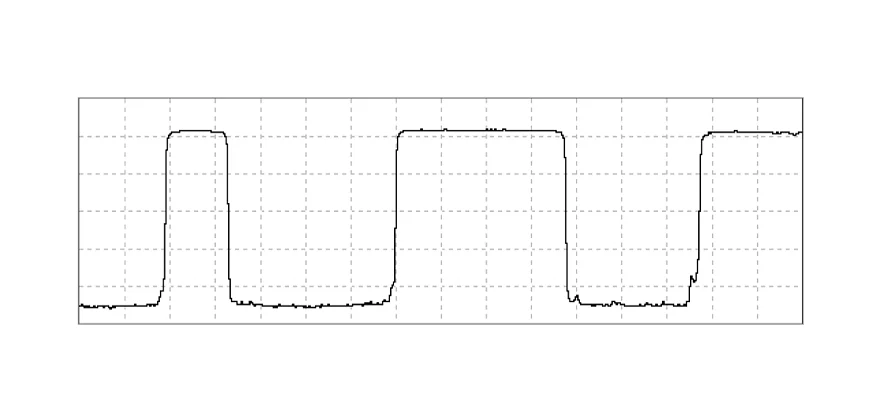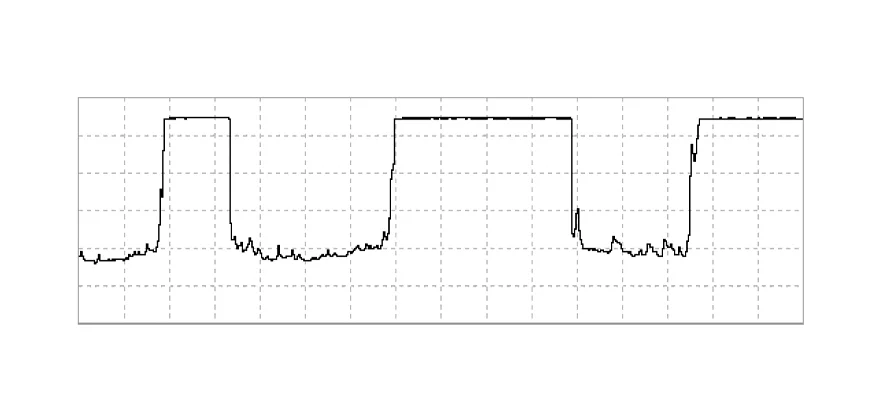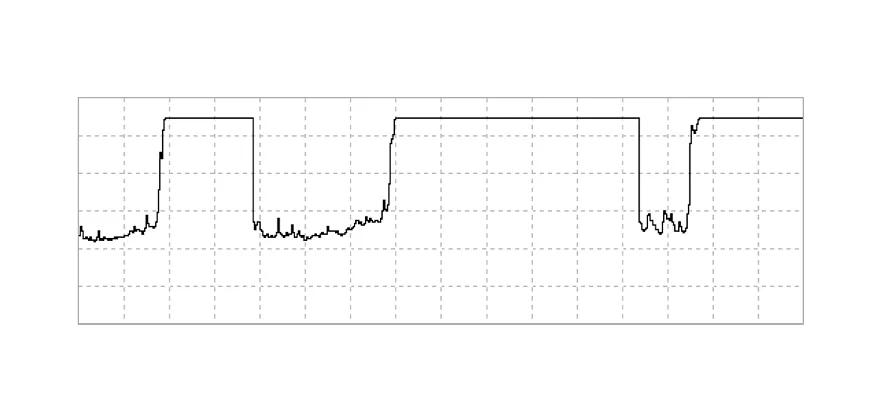When the line sensor is saturated from excessive illumination and cannot accumulate more charges, the overloaded pixels transfer some of the excess charge to adjacent pixels − an effect termed blooming. Blooming leads to the corruption of the geometrical assignment of both the signal and the image generated by the line sensor.
A line scan camera with an anti-blooming sensor can effectively dissipate the surplus charge arising from over-exposure by using a ‘drain gate’. The less exposed neighboring pixels are no longer corrupted. Over-exposures of up to 30-fold can be drained successfully, depending on the pixel frequency and spectral range of the line sensor.




